Dreaming of Spanish fluency? Imagine mastering the language in a vibrant country renowned for its friendly locals, an exceptionally clear and unhurried accent, and profound cultural traditions. If an immersive and effective Spanish learning experience is what you seek, Costa Rica should be your top choice. In this guide, we’ll delve into the distinctive characteristics of Costa Rican Spanish (“Tico Spanish”), trace its fascinating historical development, and explain why it’s uniquely suited for Spanish learners. Whether you’re a beginner or looking for more advanced Spanish courses, Costa Rica offers a language-learning experience like no other.
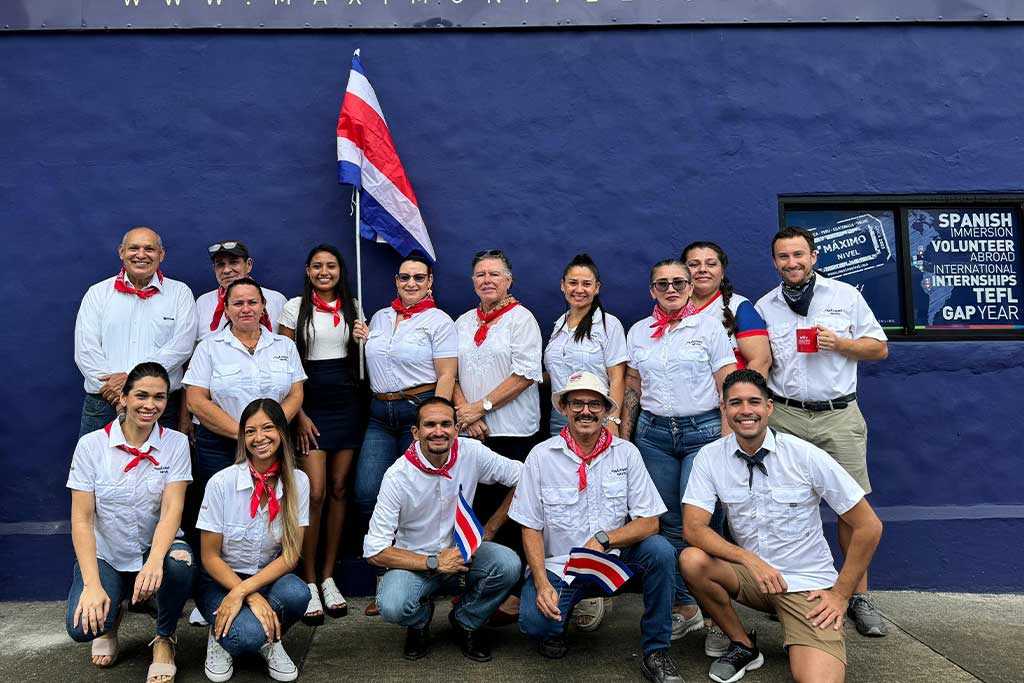
Why is Costa Rican Spanish So Unique?
Costa Rican Spanish stands out with distinctive features in its pronunciation, grammar, and everyday expressions. These characteristics not only differentiate it from other countries’ dialects but also contribute to a learning experience that is both easier and more enjoyable.
Crystal-Clear Pronunciation: Why Tico Spanish is Easy to Understand
Costa Rican pronunciation is widely regarded as one of the clearest across the entire Spanish-speaking world. Unlike some countries where rapid speech and strong regional accents can pose a significant challenge for learners, Ticos speak with a deliberate, easy-to-follow rhythm and exceptionally clear enunciation.
Some key features you’ll hear:
- “R arrastrada” – This unique “hard r” sound, similar to the “hard r” in US English, is produced further back in the tongue with minimal vibration. While a more standard, vibrated “r” might be heard in Guanacaste, this distinct “r tica” is predominantly found in the Central Valley and Central Pacific regions.
- Soft S sounds – Particularly on the coasts, the /s/ at the end of syllables tends to be softened or dropped. For instance, ‘¿Cómo estás?‘ might sound like ‘¿Cómo ehtáh?‘. Interestingly, Ticos sometimes identify this specific phonetic feature as a “Nicaraguan pronunciation,” highlighting how linguistic differences can serve as social markers.
- Dropped consonants – Final consonants like “d” and “n” are often dropped in casual speech. For example, ‘Usted‘ becomes ‘usté,’ and calidad may be pronounced calidá. The final ‘n’ also exhibits unique articulation, often sounding like an /ng/ instead of a simple /n/, as in botón sounding like /bo-TONG/.
- Other phonetic characteristics – Similar to many Latin American Spanish varieties, Costa Rican Spanish features yeísmo (where “y” and “ll” are pronounced the same) and seseo (where “z” and “c” before ‘e’ or ‘i’ are pronounced like an “s”). Unstressed vowels may also sound weaker or be omitted in casual speech, especially when followed by an “s.”
Despite these variations, Ticos maintain a relatively consistent accent across regions, with slight differences in the Northern Pacific and Caribbean. This internal consistency is uncommon in Latin America and can significantly facilitate listening comprehension for learners.
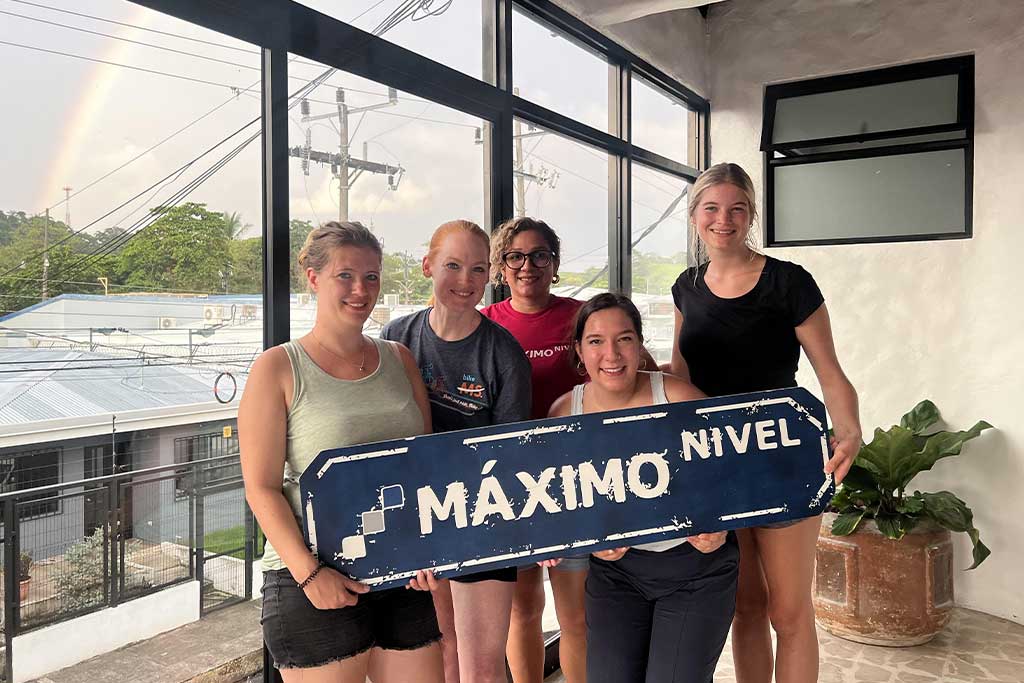
Navigating Tico Grammar: Vos, Usted, and the Art of Respectful Speech
Costa Rican grammar offers an intriguing blend of formality and warmth. Notably, Costa Ricans predominantly use ‘usted’ in casual conversation, a practice that uniquely sets them apart within the Spanish-speaking world. Children address their parents as ‘usted,’ and it is commonly used among friends. In some instances, individuals even use ‘usted’ when addressing family pets, underscoring a cultural norm that highly values politeness and respect.
Simultaneously, the informal vos is utilized, especially among younger people or in close relationships. This dual system operates as follows:
- Usted = Polite, formal, or default form
- Vos = Friendly, intimate tone (should never be used with strangers)
- Tú = Seldom used; nearly nonexistent in Costa Rican Spanish
Examples of vos conjugation include:
- ‘¿Vos querés un café?‘
- ‘Sos muy buena gente.‘
- ‘¿Tenés tiempo mañana?‘
These verb forms adhere to the general principles of voseo in Central America, though they may seem unfamiliar to learners accustomed to textbook Spanish, which usually emphasizes ‘tú.’ When in Costa Rica, you’ll note that advertising on billboards and window signs in Costa Rica often uses the ‘vos’ form of verbs, signaling its deep cultural integration and effectiveness in engaging with the local market.
The Charm of Tico Diminutives: Adding Affection to Every Word
Ticos frequently employs diminutives, which soften speech and infuse it with affection. While many Spanish-speaking countries use -ito/-ita, Costa Ricans often prefer -ico/-ica, particularly when the root word ends in ‘t’.
Common examples you’ll hear:
- “Un momentico por favor” (Just a tiny moment, please)
- “Un poquitico más” (Just a little bit more)
- Un café (coffee) becomes cafecito (a little coffee).
This usage reflects Costa Rican culture’s linguistic practices, and this widespread application of diminutives contributed to Costa Ricans’ national nickname, “Ticos.”
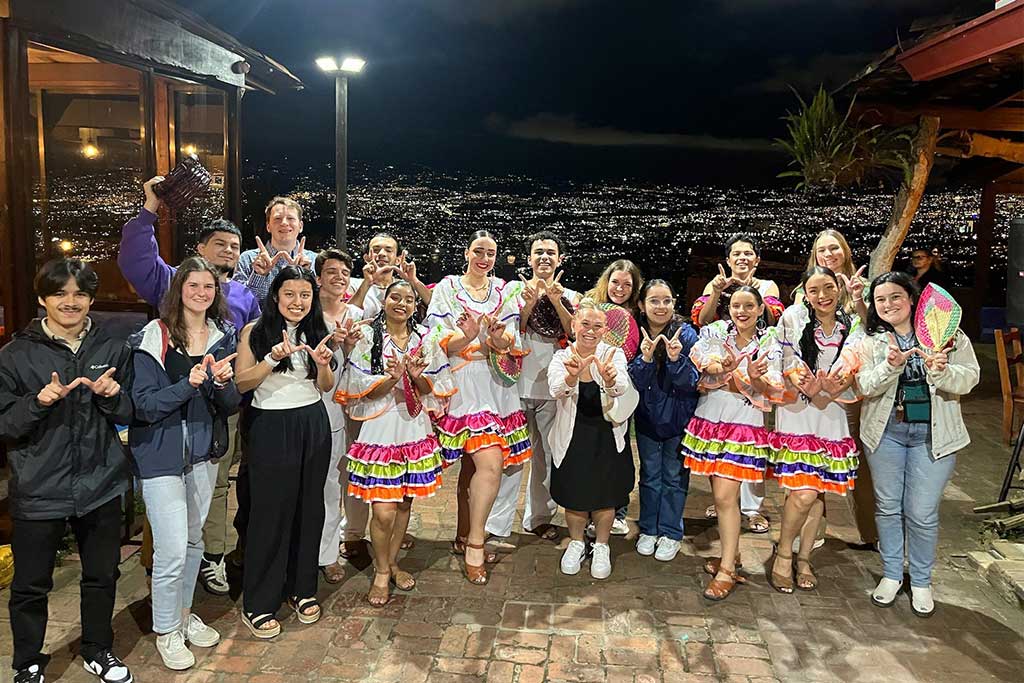
Beyond Textbooks: Essential Tico Slang and Everyday Vocabulary
Costa Rican Spanish boasts a rich collection of slang and idiomatic expressions, collectively known as “Tiquismos,” which vividly reflect the local culture and identity. These ‘Tiquismos’ are incredibly practical and often unique, making them a fascinating aspect for new learners.
Many Costa Rican expressions are visually descriptive and understandable once explained. For instance, chunche can refer to any gadget or object or simply when a Tico can’t remember a word, and zaguate is a term for a mixed-breed dog.
To explore more expressions, check out our popular blog: 10 Costa Rican Slang Words You Need to Know
Real-world examples you’ll hear:
- Pura Vida: This phrase translates to “pure life” or “simple life” and is used in multiple contexts such as greetings, farewells, thank you, or expressing a positive attitude. It encapsulates values like enjoying life, gratitude, community, environmental care, and optimism. The Royal Spanish Academy (RAE) included it in the global Spanish dictionary in November 2023.
- Mae: Pronounced “my,” this word is equivalent to “dude” or “man.” It is commonly used after Pura Vida and has roots in the English word “man,” especially within the surfing community. Initially considered vulgar, it has now become widely accepted.
- ‘Voy a bretear mañana‘ – I’m going to work tomorrow. (Brete means “work” or “job”).
- ‘Ese mae es tuanis‘ – That guy is cool. (Tuanis means “cool” or “good,” derived from the English phrase “too nice”).
- ‘¿Me regalas una botella de agua?‘ – Could you give me a bottle of water? (Regalar is used in Costa Rica instead of dar (to give), even when the item is not free).
- Güila: Used to refer to a “girl” or “young woman.”
- Wacala: An exclamation used for “eww” or “yuck!”
- Directo: Used for “straight ahead,” instead of the more common derecho. This distinction is important for giving directions to avoid confusion with derecha (right).
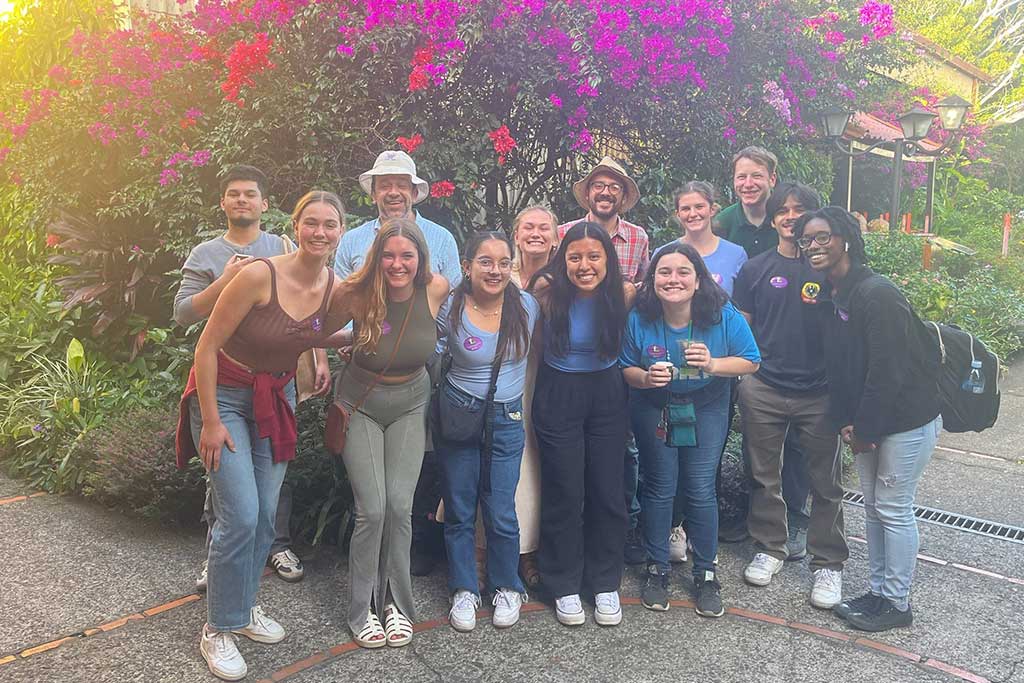
Regional Variations and Influence
Despite its relatively small size, Costa Rica’s diverse geography leads to subtle but noticeable differences in how Spanish is spoken across its regions.
Caribbean Coast (Limón Province):
The Spanish spoken here is influenced by forms of Creole English. Limonese Creole, also known as Mekatelyu, is a dialect of Jamaican Patois introduced by Jamaican migrant workers who arrived to construct the Atlantic railway and work on banana plantations. Limonese Creole itself has been in close contact with Spanish over the past century, leading to the incorporation of many Spanish words into its lexicon. However, its use is increasingly restricted to family conversations, predominantly among older speakers, and is often perceived as a “broken language” or not a “serious means of communication.” In 1949, the Costa Rican government’s ‘hispanización’ efforts mandated Spanish as the official language for Limón residents, which further increased the stigma against Creole.
North Pacific Side (Guanacaste region):
This region exhibits linguistic similarities to Nicaraguan Spanish due to long-standing political and cultural ties. Key influences include the aspiration of postvocalic ‘s’ (the dropping of the ‘s’). While both Costa Rican and Nicaraguan Spanish utilize the vos form, Nicaraguans are notably more inclined to use vos in all friendship and family interactions of equal status. Furthermore, the pronunciation of the ‘r’ and ‘rr’ differs: Costa Ricans often employ the ‘r tica’ (a semi-rolled, aspirated, non-trilled sound), whereas Nicaraguans typically use a more standard, traditional Spanish pronunciation. Despite both Costa Ricans and Nicaraguans being native Spanish speakers, their dialects are distinct and play a significant role in shaping regional ethnic identity.
In contrast, the Central Valley (San José, Heredia, Alajuela) and Central Pacific (Puntarenas, Jaco, Quepos, Manuel Antonio) maintains the “standard” Costa Rican accent—slow, polite, and clear—making it the most suitable region for language learners to base themselves.
Additionally, Costa Rica’s relative homogeneity (compared to colonial strongholds like Mexico or Peru) has led to a more uniform Spanish dialect. The absence of entrenched indigenous or caste-based linguistic systems created space for a widely spoken, simplified Spanish.
A Brief History of Costa Rican Spanish: How the Dialect Evolved
Spanish was introduced to Costa Rica by conquistadors in the 1500s, beginning with Christopher Columbus’s arrival on the eastern coast in 1503 and the establishment of the first Spanish colony in 1524. For approximately three centuries, Costa Rica remained a Spanish colony, nominally part of the Captaincy General of Guatemala.
Unlike Mexico or Peru, the territory had fewer mineral resources and a smaller Indigenous population. The Spanish conquest, spanning over half a century from 1510, had a devastating impact on these populations. Infectious diseases like measles and smallpox, combined with warfare and exploitation, drastically reduced their numbers from an estimated 120,000 in 1569 to a mere 10,000 by 1611. This catastrophic demographic collapse meant that indigenous peoples have influenced modern Costa Rican culture and language to a relatively minor degree.
Consequently, Costa Rica remained a peripheral colony—poor, rural, and relatively isolated. A Spanish governor in 1719 even described it as ‘the poorest and most miserable Spanish colony in all America.’ This isolation had several key implications:
- The severe lack of indigenous labor meant most Spanish settlers had to cultivate their own land, preventing the establishment of large haciendas that characterized much of colonial Latin America.
- This led to a “peasant economy” by the 1700s, fostering a more “autonomous and individualistic agrarian society.”
- Little social stratification meant Spanish was used more uniformly across classes, contributing to a more unified and less stratified linguistic development.
Later migrations from Europe (Germany, Italy, France in the 19th century) played a crucial role in shaping Costa Rica’s economy, particularly with the expansion of coffee and banana plantations. More recently, political unrest in Central America, especially in Nicaragua from the 1960s to the 1990s, led to a substantial influx of migrants and refugees. Current trends indicate continued migration from Nicaragua due to economic disparities, with Nicaraguan migrants now constituting a significant portion of Costa Rica’s agricultural workforce. Today, Costa Rican Spanish remains remarkably consistent and neutral, which is why it is often used in international customer service and call centers.
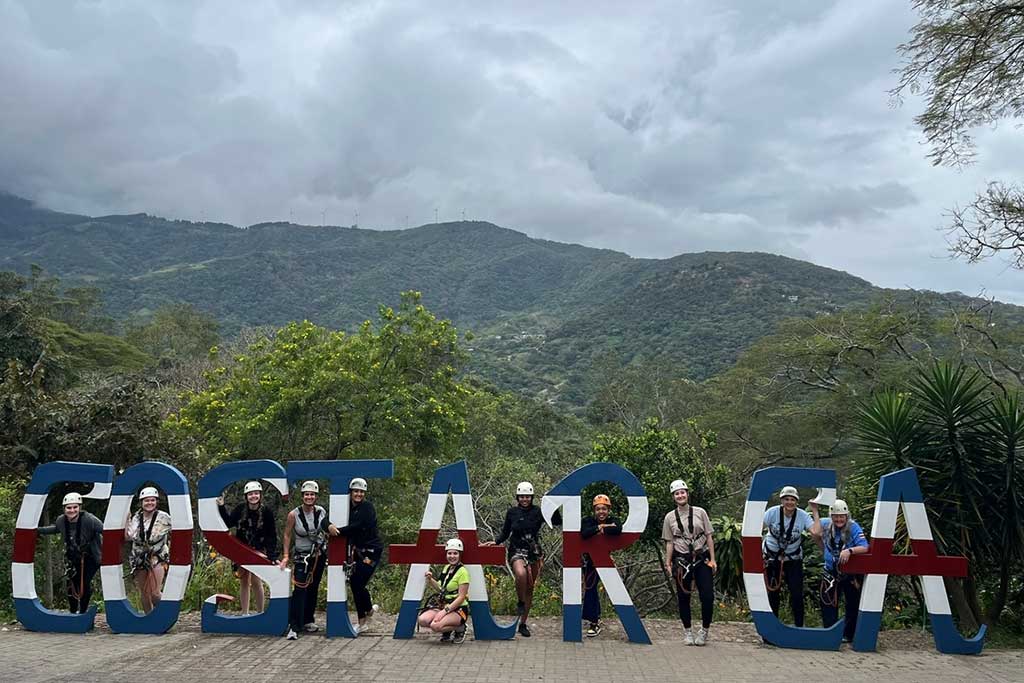
Why Costa Rica is the Perfect Place to Learn Spanish
Costa Rica is an ideal environment for aspiring Spanish speakers, combining a clear accent, exceptionally friendly locals, and an inherently immersive lifestyle. Students quickly gain confidence, feeling comfortable speaking, ordering food, engaging with host families, and naturally acquiring local phrases.
Clarity and Accessibility
Costa Rican Spanish is known for its slow and clear accent, making it easier for learners to understand and speak. This clear articulation and unhurried pace specifically help beginners focus on mastering vocabulary, grammar, and sentence structure without the added challenge of rapid or merged syllables.
Safety and Welcoming Environment
Costa Rica is renowned for its safety, stability, and high quality of life. The country consistently ranks high in global indices such as the World Happiness Report and the Global Peace Index. While common sense are always recommended in urban areas, Costa Rica is generally very safe. The Central Valley offers a cosmopolitan atmosphere with significantly fewer dangers than many major U.S., European, and Latin American cities, providing a truly secure base for your Spanish studies.
‘Ticos,’ are welcoming and engaging, making them great language partners. This friendliness fosters a supportive environment for practicing Spanish, reducing anxiety and boosting confidence. The Pura Vida philosophy further enhances this positive atmosphere, making interactions pleasant and conducive to learning.
Deep Cultural Immersion Opportunities
Learning Spanish in Costa Rica offers deep cultural immersion, allowing you to truly experience the Pura Vida way of life firsthand. Opportunities for authentic interaction are abundant in local markets, bustling streets, public buses, and vibrant restaurants and bars. Homestays with local families provide unparalleled immersion, significantly accelerating your learning process. Furthermore, study abroad programs often include enriching site visits and lectures on topics like social justice and human rights, offering a deeper understanding of Costa Rican culture and expanding your worldview far beyond what textbooks can provide.
Great Spanish Schools and Programs
At Maximo Nivel, your Spanish journey is immersive and lived. Our Costa Rica campuses are in:
- San José: The lively capital. Explore our San José Spanish school.
- Manuel Antonio: A beachside town near parks and wildlife. Explore our Manuel Antonio Spanish school.
We offer a variety of programs tailored to your learning style and goals:
- Spanish Immersion: Private or small-group classes for personalized learning. Check out our Spanish Immersion programs.
- Super Intensive: Fast-track fluency with accelerated learning.
- Spanish for Medical & Business: Purpose-driven learning for specific career paths.
- Online Lessons: Flexible options to continue your learning before or after your trip. Learn more about Online Spanish Classes.
With expert teachers, engaging cultural activities, and meaningful volunteer opportunities, Maximo Nivel provides a full immersion experience—whether you’re here for one week or several months. Start your Spanish adventure in Costa Rica today!
